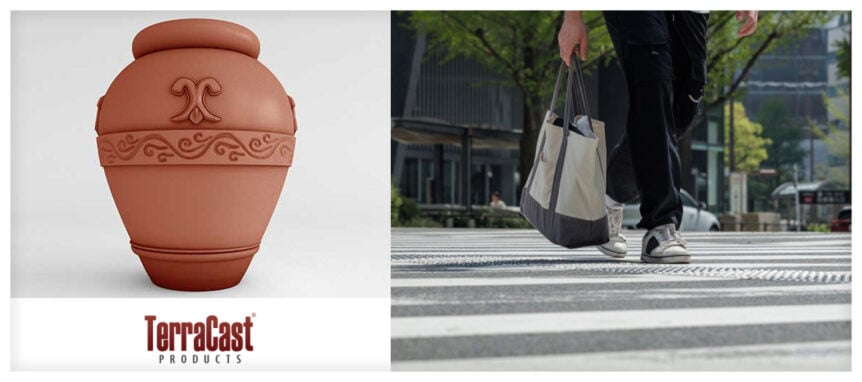Transit zones: bus stops, train platforms, subway entrances, and light rail stations, are some of the most demanding public environments in a city. From early morning commuters and school traffic to late-night riders and weekend crowds, these spaces are in near-constant use. This high-volume, high-frequency nature makes them especially vulnerable to wear, vandalism, and weathering.
As cities strive to improve accessibility, safety, and comfort in these areas, the selection of public furnishings becomes more than a matter of visual appeal. It’s about choosing materials and designs that can withstand relentless use without showing their age, or requiring costly maintenance.
The Toll of Transit Traffic
Unlike parks or pedestrian promenades, transit areas are rarely empty. People flow through them in unpredictable patterns and at varying speeds. These are not just waiting areas; they are performance zones. A bench at a bus stop may support hundreds of users a day. A trash receptacle near a subway station could be emptied several times per shift. Planters, railings, and partitions may serve dual purposes, directing pedestrian flow while also providing aesthetic and safety enhancements.
With this kind of usage, traditional materials often fail to keep up. Metal benches can rust, paint can chip, and wood can splinter or rot. Replacing damaged items takes time and budget, and temporary gaps in infrastructure create negative experiences for users. Transit authorities and urban planners need furnishings that resist damage, deter graffiti, and retain their appearance even under harsh conditions.
Resin: A Material Built for Movement
One of the most effective responses to this challenge is the use of resin-based furnishings. Unlike metal or wood, resin products are engineered to endure both environmental stress and user impact. Their non-porous surfaces resist grime, are easy to clean, and can withstand exposure to UV rays, extreme temperatures, and frequent handling.
Resin’s inherent flexibility is especially valuable in transit zones, where collisions, bumps, and contact with wheeled carts or bikes are commonplace. Where other materials might dent or splinter, resin retains its form without compromising safety or appearance.
TerraCast® resin furnishings, for example, are made from Linear Low-Density Polyethylene (LLDPE), which provides exceptional resistance to cracking, fading, or corrosion. These products are ideal for high-traffic areas and are available in a wide range of colors to align with city branding or wayfinding needs.
Maintenance Made Manageable
The daily rush of commuters shouldn’t translate into daily repairs for maintenance crews. Cities looking to reduce long-term costs are increasingly prioritizing furnishings that require minimal upkeep. Resin’s resistance to fading, chipping, and surface damage helps limit the need for repainting or refinishing. Even in the face of vandalism, graffiti can typically be removed using basic cleaning solutions, no sandblasting or harsh chemicals required.
Transit zones are also places where cleanliness matters. Users may judge the quality and safety of public transportation by the appearance of the spaces around it. Resin’s smooth, non-porous surface makes it far easier to sanitize, wipe down, and maintain, even in challenging weather conditions.
Flexible Design for Dynamic Spaces
Transit zones are constantly evolving due to new routes, temporary service changes, or infrastructure upgrades, so cities benefit from furnishings that can adapt without extensive labor. Many TerraCast® benches and tables are compatible with optional anchoring systems, offering the security needed for busy pedestrian zones while remaining removable when reconfiguration is necessary.
This is especially valuable during parades, road closures, or construction detours, where quick setup and removal are essential. While not all resin furnishings are lightweight, they are typically easier to handle than heavy concrete or metal alternatives, allowing city staff to relocate them without requiring heavy machinery. This flexibility supports more responsive, event-ready public design without sacrificing durability.
A Unified Look That Lasts
While function is essential, appearance still matters. Transit zones often represent a visitor’s first impression of a city, especially at airport shuttles or major transfer hubs. Resin site furnishings offer a polished, consistent look that can be customized to match color schemes, design aesthetics, or even architectural themes of nearby buildings.
The ability to choose from a wide color palette allows cities to use planters or seating as subtle wayfinding tools. Brighter colors can indicate seating zones, while neutral tones can blend seamlessly into background areas. Even better, resin maintains that visual appeal longer than many traditional materials, avoiding the weathering or chipping that can make older furnishings look neglected.
Durability Meets Daily Function
Transit design requires a careful balance of form and function. Site furnishings must be sturdy but adaptable, visible but not intrusive, and above all, ready for constant use. Resin’s combination of durability, ease of maintenance, and customizable design makes it a go-to choice for planners aiming to enhance the user experience without sacrificing long-term performance.
From major city centers to suburban transfer points, TerraCast® resin furnishings deliver the resilience transit zones demand, while still supporting the design flexibility cities need to grow.
To learn more about site furnishing solutions that are made to last through the daily rush, reach out to TerraCast Products here.

